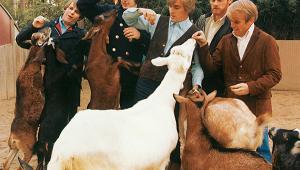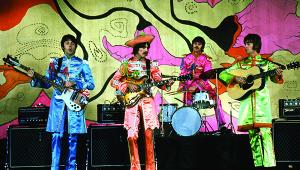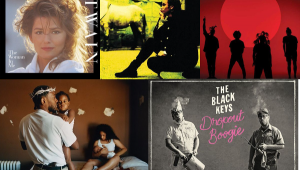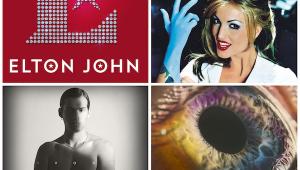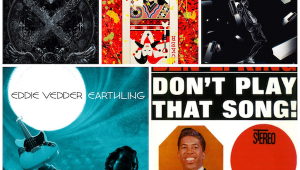Phil Manzanera on the Pleasure of Having Roxy Music Mixed in Atmos

Phil Manzanera likes thinking in 360 degrees. Ever since Steven Wilson masterminded a stellar 24-bit/96kHz DTS-HD Master Audio 5.1 mix of Roxy Music’s self-titled June 1972 debut album for inclusion in a 45th anniversary 3CD/1DVD box set released by Virgin/EMI/UMC in February 2018, he’s been hooked on surround. Nowadays, the Roxy Music guitarist/composer is looking forward to hearing what his longtime band will sound like in Dolby Atmos.
“It’s a very exciting prospect for me just to hear all that music of ours in Atmos,” Manzanera concurs. “Last time, I went around to Steven’s place when he was doing [the 5.1 mix] for the Roxy Music album. And if I play my cards right, he might invite me again! I’m so excited about that possibility, because he’s my man.” (Ours too.)
After wrapping up Roxy Music’s 50th anniversary reunion tour late last year, Manzanera has since been busy with a score of other projects—including a trio of collaborations with one of his Roxy bandmates, saxophonist Andy Mackay. The first of their collabs, an atmospheric instrumental exploration designated by their initials AM ● PM, was released on BFD/Expression in October That album was followed in early November by Roxymphony, the duo’s Queen Elizabeth Hall concert from 2018 in London that boasts a number of notable Roxy Music songs reimagined alongside a 20-piece orchestra and the Owl Parliament Choir. Their third effort was a re-release of the Manzanera & Mackay Featuring The Players’ 1989 holiday album Christmas, which also dropped in November.
Manzanera’s fourth project for the year was released just this week—namely, the Tim Finn & Phil Manzanera 3LP limited edition box set that contains 2021’s Caught by the Heart as LP1, 2022’s The Ghost of Santiago as LP2, and five previously unreleased bonus tracks on LP3. All four of these fine releases can be ordered in multiple format options directly from Manzanera’s official store right here.
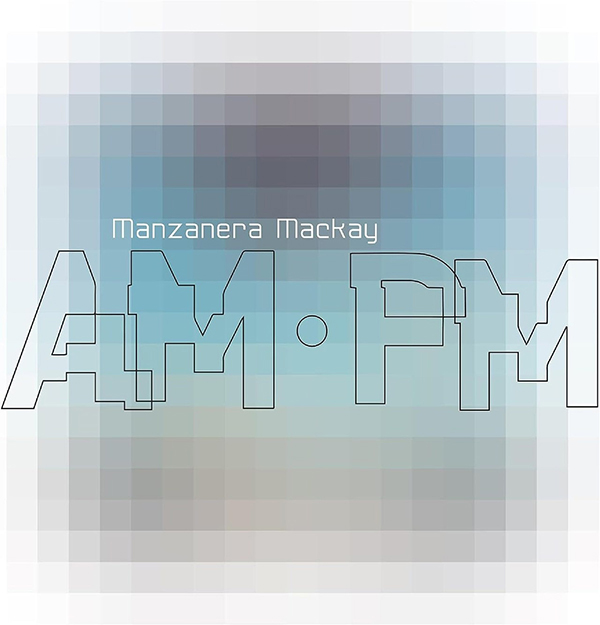
Given his surround-oriented proclivities of late, I asked Manzanera if he’d consider having AM ● PM done in Atmos next, given how the album’s overall beyond-stereo vibe seems perfectly suited for a full 360-degree undertaking. “It never occurred to me,” Manzanera admits, “but you’re absolutely right—it would be great in Atmos. I should suggest that to Andy [Mackay]. Andy has a friend who’s offered him a whole bunch of free studio time to experiment with Dolby Atmos—so that would be the perfect way to use it. Yeah, it would be great to add another dimension to the AM ● PM album, actually.” Time will only tell if/when we get to experience that expansive Atmos mix-to-come together.
Manzanera, 72, and I got on Zoom recently to discuss which early Roxy Music track will be better served in Atmos, how Steven Wilson’s 5.1 mix enhanced the palette of the band’s self-titled debut, and which Roxy release he feels will be the “ultimate” Atmos album. Like a dream in the night / Who can say where we’re going. . .
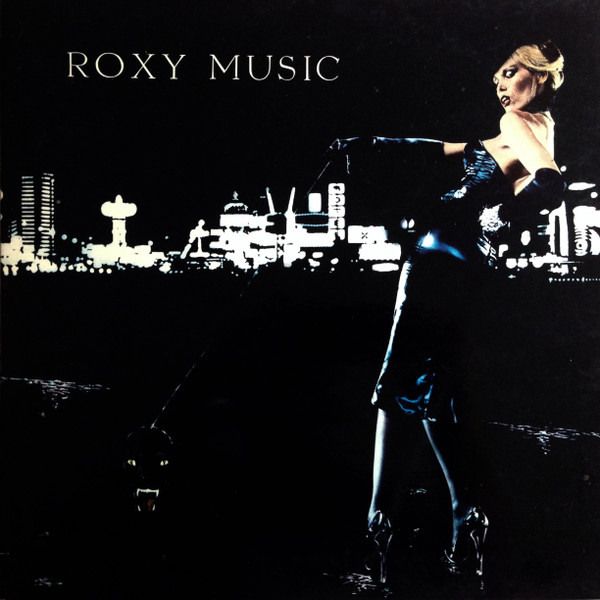
Mike Mettler: In our previous interview in 2018, when I asked you if you could have Steven [Wilson] mix any Roxy song in surround sound, you mentioned a For Your Pleasure track. If you remember what the name of that track is, then you win a prize. (chuckles)
Manzanera: Yes, I can remember. That would be “In Every Dream Home a Heartache.”
Mettler: Yes, that’s correct—you win the prize! (both laugh) [“In Every Dream Home a Heartache” is the last song on Side 1 of For Your Pleasure, which was released in March 1973 on Island.] Tell me, in your view, why you think “In Every Dream Home a Heartache” would be perfect in Atmos.
Manzanera: Well, you know, the thing about that album is that we managed to achieve this sort of thing that really sums up Roxy Music—especially because [VCS3 synthesizer maestro] Brian Eno was still in it. And what it was, basically, is that we, as the musician part of it, created a musical world that Brian’s voice could exist in, and it was something unique. So, I’m hoping that—especially in Atmos—you too can enter into this world.
Also, at that time [in 1973], the music was restricted by the restraints of vinyl in terms of the timing you could have on each side. The optimum time would be about 20 minutes on vinyl before the needle starts jumping off due to the bass frequencies, and all that kind of thing. Unrestricted by the constraints of that technology, I’m looking for something very exciting in Atmos. The fundamental sounds, which are all very organic and analog, really—well, there were no “whizzy” keyboards available, for one thing. You had to make the sounds yourself, in a very British way. They used to call it the “Heath Robinson” kind of way—as in, “get a rubber band and a couple of bottles, stick them on a piano, and try to record it 10-foot high or something.” (both laugh) [The name/phrase “Heath Robinson” is slang for trying to do something that is patently absurd and essentially impractical.]
Mettler: Oh, I think that’s got to be a total “yes” on Steven’s part to do the Pleasure album in Atmos for you. Last year, when he did ABC’s The Lexicon of Love in Atmos, [ABC’s co-founding lead vocalist and chief songwriter] Martin Fry came by to hear what he did. What Steven said to me about that listening session was, essentially, “One thing I love doing is having artists come in and hear these mixes because, a lot of times, they haven’t had personal experiences with a full surround setup like an Atmos 7.1.4 system—or they’ve just never even heard their own music in surround before.”
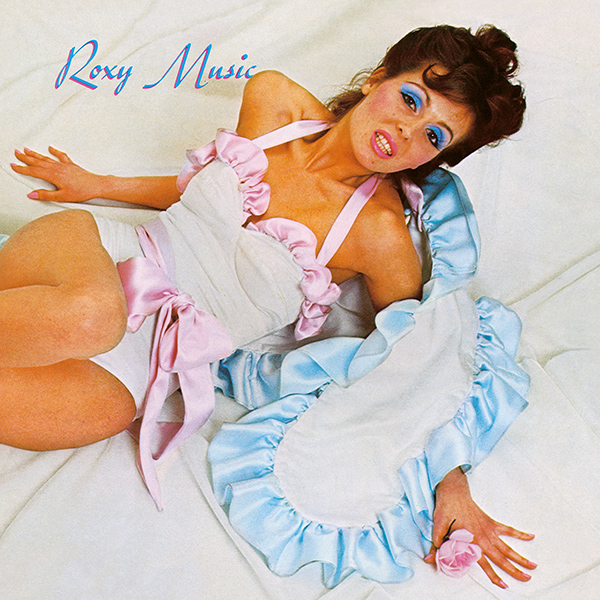
And, just as you said, you went around to Steven’s mixing studio yourself to hear the Roxy Music 5.1 mix. For you, as the artist, when you heard what Steven did with that first Roxy album, was there anything there that was like, “Wow, I’ve never heard that before,” or “that was what I heard in my head, but it never quite got out there in that way until now”? Was his Roxy Music 5.1 mix something like a revelation to your ear?
Manzanera: Well, actually, it was, because the end of “Ladytron” (Track 2) went on a lot longer. That used to be a track where me and Eno used to do a sort of freak-out thing at the end where he would “treat” [i.e., process] my guitar and all. So, there’s a lot of stuff there in 5.1 that nobody had heard before, as it was cut short because of the time restraints—which is pretty exciting if you’re a fan of Eno. For instance, I’m a fan of The Beatles, and I’d love to hear some of that kind of stuff of theirs because I’ve heard the originals so many times I’m desperate to hear just a little something new in there that maybe I haven’t heard before. So, as a fan, I know what it’s like to enjoy that something extra—especially with albums I already know so well, you know?
Mettler: Oh yeah, yeah—it’s the same thing for me. And when it comes to that Roxy Music 5.1 mix, I think of a song like “Re-Make/Re-Model” (Track 1) that serves as another good example of us being able to hear things that are already there, but now we’re able to get the whole sound picture of it a lot more in full.
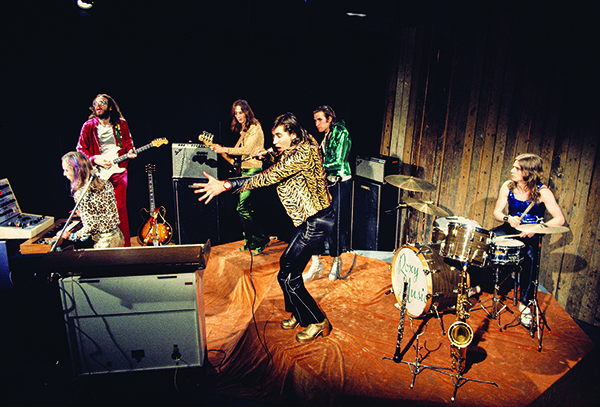
I mean, it’s no secret the word “immersive” make sense here, because a lot of times, that 5.1 mix makes us feel like we’re in the middle of how you guys were set-up in the studio, and even onstage too. Some of the videoclips on the DVD that’s in the Roxy Music box set show us what you guys were doing there together. Because of that, I can now visually place it like, “Here’s where Bryan [Ferry, vocalist] is, here’s where Phil is, here’s where Brian [Eno] technically is, here’s where Andy [Mackay, saxophonist] is, here's where Graham [Simpson, bassist] is, here’s where Paul [Thompson, drummer] is.” Because of that, we get the physical sense of how you guys are looking at each other, and it feels more interactive.
Manzanera: It is! And that was what was great about watching Get Back, the [2021-released] Peter Jackson version of Let It Be.
Mettler: Yes, exactly!
Manzanera: I always wanted to know what was going on there. I mean, I had a visual—really just a dream about it—and to be able to actually see that was just amazing.
Mettler: Yeah, I totally agree. I think we always felt [May 1970’s] Let It Be was a record that had a narrative to it that wasn’t quite true because of the way the original film was edited, and just how people decided, “Well, that’s what it was.” Jackson’s version ran for, what was it—like nine hours, or whatever? I mean, I could have watched 90 hours of it. Seeing Paul [McCartney] sitting at a piano with [Beatles road manager/personal assistant] Mal Evans standing next to him where they’re just talking—and then Mal throws a line out and Paul runs with it, and adapts it into a song like “The Long and Winding Road.” Moments like that are just pure gold from heaven, right? I mean, you can’t get any better than that.
Manzanera: Yeah, absolutely. Totally! (chuckles)
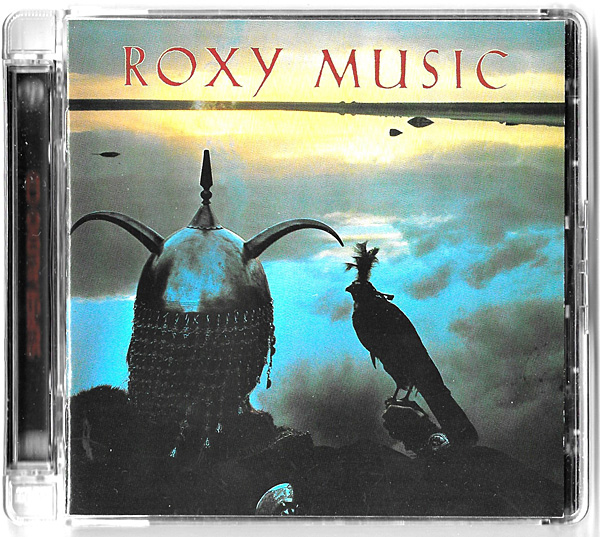
Mettler: Back to Roxy. I love the surround mix of Avalon that’s on SACD. Any news about an Atmos update for that album?
Manzanera: I think [producer/noted surround and Atmos remixer] Bob Clearmountain has recently done a Dolby Atmos mix of it with Rhett [Davies, the album’s original co-producer]. They did it a few months ago. I just got an email saying something about, “Did you want to go and hear it?” You bet!
Mettler: Oh yeah—me too! (laughs) Is that digital or physical, or both? Do you know when the actual Avalon rerelease is coming out?
Manzanera: Literally, the email popped up just before we got on here, and I just had a quick glance at it. But I went, “Wow, okay!” I better go back and read it more thoroughly. (chuckles)
Mettler: Well, whatever the case is, that’ll sure be something to hear in Atmos.
Manzanera: Yes. Avalon will be great in Atmos.
[MM notes: Avalon was released in May 1982 on EG/Warner Bros., and the SACD was released in 2003 on Virgin. We are, of course, awaiting confirmation about a possible Avalon reissue with the Atmos mix Manzanera mentioned above—and you can be sure I’ll be reviewing it for S&V whenever it becomes available!]
Mettler: Obviously, just thinking of the open space in the mix of the title track alone—as the artist, is there anything on Avalon you look forward to hearing the most in Atmos? I feel like, in the height channels, the song “Avalon” is going to rise above the literal plane and put you in a special place. Especially given what Andy [Mackay] does with the sax, the female vocals that are in there, and your own guitar work on it—I can already hear it shimmering across the channels as it plays, you know what I mean? Plus, a song title like “More Than This” takes on an even more visceral meaning when you think about Avalon being in Atmos.
Manzanera: Yes. I think, out of all the Roxy albums—and maybe even more than For Your Pleasure—Avalon is going to be the ultimate Dolby Atmos album for us, actually. It’s the most ambient album, in some ways. Of all Roxy’s stuff, it’s quite abstract in places as well. So, I think that’s going to be (slight pause)—well, I’m looking forward to that one, yeah. It says a lot about the way technology has changed—but that’s a whole other conversation.
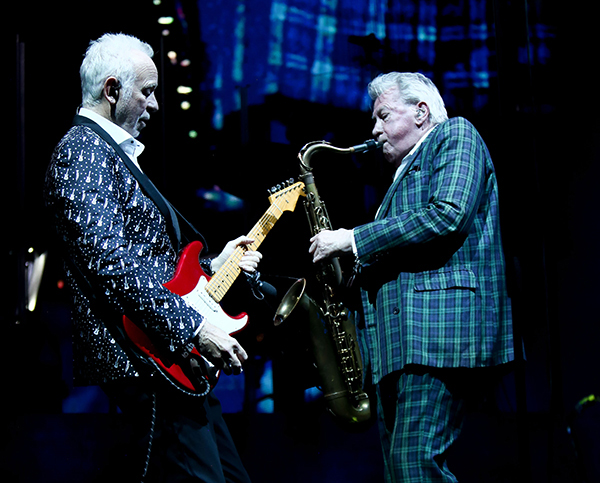
- Log in or register to post comments
